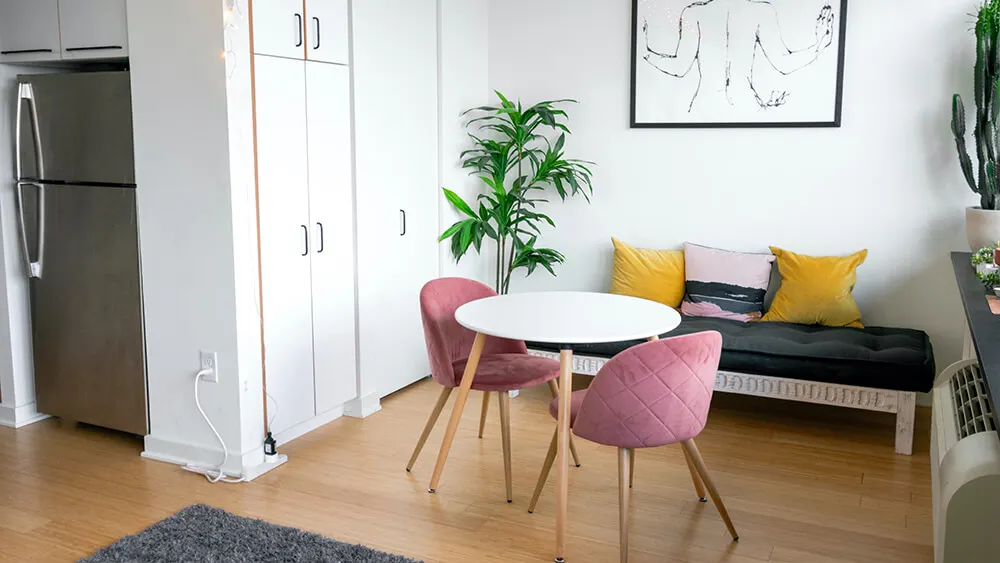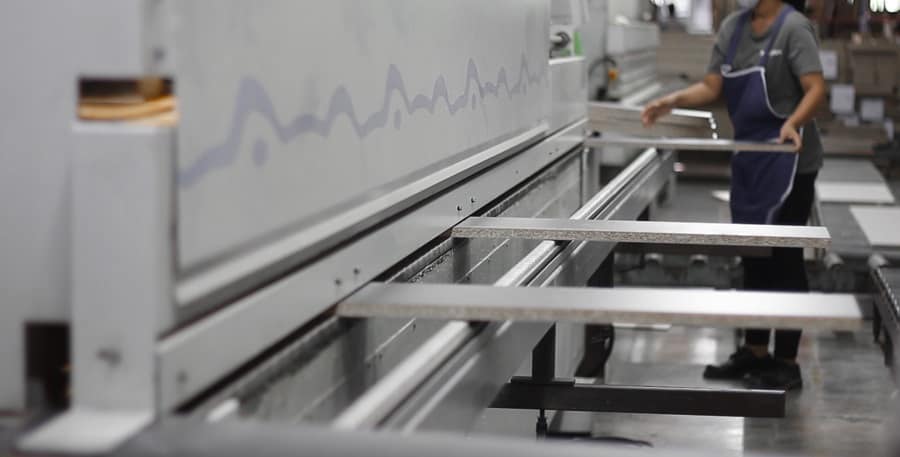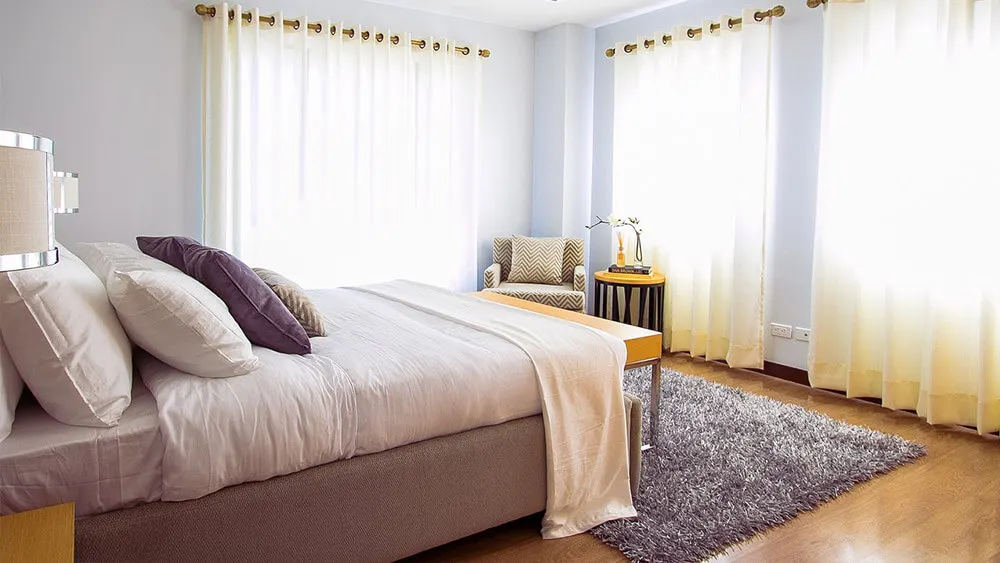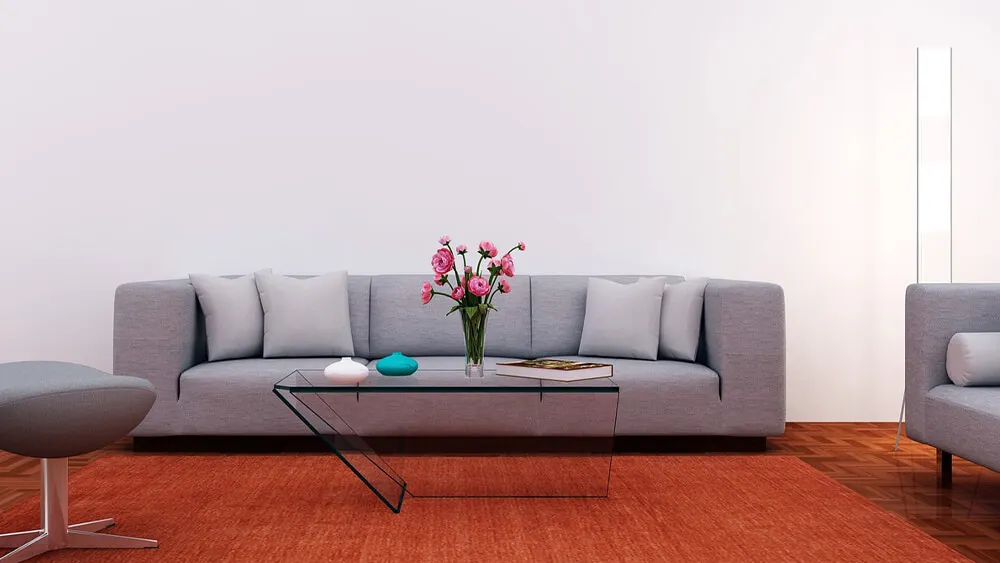Both furniture retailers and wholesalers will never stop looking for new products. Therefore, we ensure the quality to satisfy our customers. This blog will cover all the details of furniture inspection and quality control. Please read on to learn more.
If there is anything about importing furniture from China, HOMVND will be happy to help you; welcome to connect with us.
Why Is It Important For Importers?
Quality control for furniture ensures that manufactured products meet a certain standard of quality before they are released to the market.
This is important for importers because they need to be confident that the furniture they receive meets their quality and applicable safety and regulatory standards.
The importance of quality control can be seen in several industries where poor quality products can lead to serious safety issues, such as in the automotive industry. In furniture manufacturing, quality control is essential in ensuring that products are durable and will not pose a safety hazard to users.

Below are 10 reasons why importers need to ensure quality control for furniture:
- 1. To Ensure The Safety Of Users: Poorly made furniture can pose a severe safety hazard to users, mainly if it is not constructed correctly. Quality control helps ensure that products are safe to use and will not pose a risk of injury.
- 2. To Meet Regulatory Requirements: In many countries, there are strict regulations governing furniture manufacture. Importers must ensure that the products they receive meet all applicable safety and quality standards.
- 3. To Avoid Product Recalls: If a piece of furniture is found to be defective, it may need to be recalled from the market. This can be costly and damaging to a company’s reputation. Quality control helps to avoid such situations by ensuring that products meet all relevant quality standards before they are released to the market.
- 4. To Ensure Customer Satisfaction: Importers want their customers to be happy with the products they purchase. Quality control helps ensure that products meet customer expectations in terms of quality and safety.
- 5. To Protect The Reputation Of The Company: A company’s reputation can be seriously damaged if it is associated with poor-quality products. Quality control helps protect the company’s importance by ensuring that only products of the highest quality are released to the market.
- 6. To Avoid Costly Repairs: If a piece of furniture is not made to a high standard, it is more likely to break or become damaged. This can result in costly repairs or replacements being required. Quality control helps to avoid such situations by ensuring that products are made to a high standard of quality.

- 7. To Ensure Durability: One of the main things customers look for when purchasing furniture is durability. Quality control helps ensure that the products are made to last and will not need to be replaced prematurely.
- 8. To Save Time And Money: In the long run, quality control can save importers time and money. By ensuring that products meet all relevant quality standards, importers can avoid needing costly repairs or replacements.
- 9. To Reduce Waste: Poorly made furniture is more likely to end up in landfill sites. Quality control helps to reduce waste by ensuring that products are made to a high standard and won’t need to be disposed of prematurely.
- 10. To Ensure Compliance With Warranty Requirements: Many furniture manufacturers offer warranties on their products. To claim such a warranty, importers must ensure that the products they have purchased meet all relevant quality standards. Quality control helps ensure compliance with warranty requirements, saving importers time and money in the long run.
As you see, there are several factors why quality control is essential for furniture. Importers need to ensure that they are receiving products of the highest quality to protect the safety of users, meet regulatory requirements, and avoid costly repairs. Quality control is essential in furniture manufacturing and should not be overlooked.

How Can Importers Ensure The Furniture Meets Quality Control Standards?
Ensuring that imported furniture meets quality control standards can be a challenge for importers. This is because quality control standards can vary from country to country and from manufacturer to manufacturer.
So if an importer is not familiar with the standards of the country or manufacturer, they may not know how to ensure that the furniture meets those standards.
Here are 12 factors that need to be considered to ensure that the furniture you are importing meets quality control standards.
- 1. The Type Of Furniture: There are different types of furniture, such as office furniture, bedroom furniture, dining room furniture, and so on. Each type of furniture has its quality control standards. So you need to know what type of furniture you are importing and what the quality control standards are for that type of furniture.
- 2. The Country Of Origin: The quality control standards for furniture vary from country to country. So you need to know which country the furniture is coming from and what the quality control standards are in that country. if not familiar with the standards, it would be best to consult with someone who is.
- 3. The Manufacturer: The quality control standards for furniture also vary from manufacturer to manufacturer. So you need to know which manufacturer is making the furniture and what their quality control standards are. The manufacturer should have a quality control manual that outlines its standards.

- 4. The Materials Used: The materials used in making furniture can affect the quality of the furniture. So you need to know what materials are used in the furniture and what the quality control standards are for those materials. If materials are not of good quality, the furniture will not be of good quality, for example, using particle board instead of solid wood.
- 5. The Construction: The way the furniture is constructed can affect its quality. So you need to know how the furniture is constructed and what the quality control standards are for that construction.
- 6. The Finish: The finish on the furniture can also affect its quality. So you need to know what type of finish is on the furniture and what the quality control standards are for that finish.
- 7. Size: The size of the furniture can affect its quality. So you need to know what size the furniture is and what the quality control standards are for that size. When the furniture is too small or too large, it can affect its quality.
- 8. Packaging: How the furniture is packaged can also affect its quality. So you should know what type of packaging is used and what the quality control standards are for that packaging.
- 9. Labeling: The labeling on the furniture can also affect its quality. If the labeling is not correct, it can mislead the customer about the quality of the furniture. Ensure that the labeling is accurate and that it meets quality control standards.

- 10. Testing: The furniture should be tested before it is shipped to the customer. Testing can reveal any problems with the furniture and help to ensure that it meets the quality control standards.
- 11. The Inspection: The furniture should also be inspected after it is shipped to the customer. This is to ensure that there are no problems with the furniture and that it meets the quality control standards.
- 12. The Warranty: The furniture should come with a warranty that covers any problems that may arise. This will protect the customer in case there are any problems with the furniture.
By considering these factors, you can ensure that the furniture you are importing meets quality control standards.
Common problems and solutions in furniture manufacturing
While furniture is built to last, several issues can occur during the manufacturing process that can lead to problems down the road. Below are some issues that can occur, as well as tips on how to correct them or avoid them if they do occur.
Some common problems with furniture:
- Warping: This can happen when boards are not cut to the proper size or when they are not nailed down properly.
- Splitting: This can happen when boards are not cut correctly or when they are not nailed together properly.
- Cracking: This can happen when the wood is not sanded properly or when it is not sealed properly.
How Can You Avoid These Problems?
- Proper size: By making sure that all boards are the proper size and that they are securely nailed down, you can avoid warping.
- Steady: By making sure that all boards are cut correctly and that they are securely nailed together, you can avoid splitting.
- Sanded & sealed: By making sure that all wood is sanded properly and that it is sealed properly, you can avoid cracking.

If these problems occur, the best way to fix them is to hire a professional furniture repair person to come and fix the issue. By taking these precautions, you can ensure that your furniture will last for many years to come.
Furniture Inspection Report
Furniture inspection is critical for ensuring that your products meet quality standards and are free of defects. There are some key factors that you should look for when you’re inspecting furniture, including:
- The overall construction of the piece
- The quality of the materials used
- The finish of the piece
- Any defects or damage
If you’re not satisfied with the furniture quality, it’s important to speak up and have it repaired or replaced. At HOMVND, we understand the importance of quality control for furniture. We offer a range of services to help you ensure that your products meet the highest standards, including:
- Factory audits
- Product inspections
- Lab testing
Lab Furniture Testing
There are a variety of different types of furniture that need to be tested in order to ensure that they meet safety and quality standards. This includes chairs, tables, beds, and other types of furniture.
Testing furniture can be a complex process, as there are many different factors that need to be considered. Below, we’ll talk about some of the vital aspects of furniture testing.
1. Strength and Stability Testing
One of the most important aspects of furniture testing is strength and stability testing. This type of testing is conducted in order to ensure that the furniture is able to support the weight of people using it. This is especially important for chairs and beds, as these are typically used by people who are much heavier than the average person.
2. Material Testing
Another aspect of furniture testing is material testing. This type of testing is conducted in order to ensure that the materials used in the furniture are safe and durable. It tests lead and other toxic materials.
3. Structural Testing
Structural testing is very important. This type of testing is conducted to ensure that the furniture is structurally sound. It includes things like checking for weak points in the furniture that could cause it to collapse.
4. Functionality Testing

Functionality must be taken in consideration. It ensures that the furniture can function properly. This test is conducted to check the mechanisms in chairs and beds to make sure they work correctly.
5. Safety Testing
Safety testing is another important aspect of furniture testing. It lets you know if the furniture is safe to use. It checks for sharp edges and makes sure that the furniture meets all safety standards.
Standards of Furniture Inspection
There are a few standards that are important to note when discussing furniture inspection.
- The first is the ASTM E 1590-09, which is the Standard Consumer Safety Specification for Cabinet Construction. This standard is important because it establishes minimum safety requirements for the construction of cabinets, which are common types of furniture.
- The second standard is the ANSI/BIFMA X5.1-2011, which is the Standard for Office Seating. This standard covers things like ergonomics, durability, and stability in office chairs.
- Finally, the third standard is the ASTM E 84-17, which is the Standard Test Method for Surface Burning Characteristics of Building Materials. This standard is important because it tests how quickly a material will catch fire and how much smoke it will produce when it does burn.
These three standards are just a few of the many that exist for furniture inspection, but they are some of the most important.

Solutions for Received Substandard Furniture:
Sometimes, despite a company’s best efforts, imported furniture can arrive damaged or not up to the expected standards. If this occurs, it is vital to take action immediately to avoid further issues.
In case of receiving furniture that does not meet the importer’s quality control standards; the importer should take the following actions:
- 1. Evaluate the situation to determine if there is an immediate safety concern. If so, take appropriate steps to mitigate the risk and contact the supplier immediately.
- 2. Identify the main cause of the problem. Is it a problem with the materials, furniture design, manufacturing process, or something else?
- 3. Work with the supplier to develop a plan to fix the issue and prevent it from happening again in the future.
- 4. If the furniture is already in use, determine if there is a risk of further damage or injury. If so, take steps to protect users from harm.
- 5. Contact customers who have purchased the affected furniture and provide them with information about the issue and how to mitigate any risks.
- 6. If necessary, recall the affected furniture and provide customers with a refund or replacement product.
- 7. Evaluate your quality control procedures to identify any areas that need improvement.
- 8. Implement changes to your quality control procedures to prevent similar issues from occurring in the future.
- 9. Keep communication lines open with customers, suppliers, and other stakeholders throughout the process.
- 10. Learn from the experience and use it to improve your business operations going forward.

These steps will help to ensure that the issue is dealt with in a timely and effective manner. By taking action quickly and working collaboratively with the supplier, it is often possible to resolve the issue without causing any major disruptions.
Tips For Ensuring Your Furniture Meets Import Requirements!
When you are importing furniture into the United States, there are a few things you will need to consider to ensure your furniture meets all of the import requirements.
Below are 12 tips to help you with this process:
- 1. Research the import requirements for furniture into the United States. You will find this information on the website of the U.S. Customs and Border Protection (CBP). The CBP website has a searchable database of all import requirements, so you can easily find the information you need. These requirements may include things like product safety standards, labeling requirements, and so on.
- 2. Make sure that your furniture meets all of the requirements set forth by the CBP. In particular, pay close attention to product safety standards. These standards are in place to protect consumers from potentially unsafe products, so your furniture must meet them.
- 3. Keep all documentation related to your furniture, including receipts, invoices, and shipping documents. This will help you to prove that your furniture meets all import requirements. These documents will also be helpful if there are any problems with your shipment. Also, be sure to keep a copy of the CBP’s import requirements on hand, so that you can reference them if needed.
- 4. If you are importing used furniture, make sure that it is clean and free of any pests or diseases. To do this, you may need to have the furniture treated by a professional before shipment. Ensuring that your furniture is clean and pest-free will help to avoid any delays or problems at the port of entry.
- 5. Make sure that your furniture is properly labeled with the country of origin. The label should be placed in a visible location on the furniture. This is important because the CBP will need to know the country of origin to properly assess any import duties or taxes that may be due.

- 6. Make sure that your furniture is properly packaged to prevent damage during shipping. A proper packaging job will help to ensure that your furniture arrives at its destination in the same condition as it left. Otherwise, it may be subject to inspection by the CBP, which could cause delays.
- 7. Choose a reputable shipping company that has experience in shipping furniture to the United States. Discovering a company that is familiar with the import process will help to ensure that your shipment goes smoothly and that there are no problems. Thus, it is worth taking the time to find a good shipping company.
- 8. Insure your furniture for its full value in case it is damaged during shipping. You can purchase insurance from your shipping company or a third-party insurer. Either way, ensuring your furniture will help to protect you financially in case of damage.
- 9. Keep track of your furniture shipment throughout the shipping process. Tracking your shipment will help you to know when it is expected to arrive and will allow you to track its progress in case there are any delays. For this reason, it is a good idea to choose a shipping company that offers tracking services.
- 10. Be prepared to pay any duties and taxes that are due on your imported furniture. You must have the necessary budgets available when your furniture arrives, as the CBP will not release your shipment until all duties and taxes are paid. If you are unsure of the amount that is due, you can contact the CBP for help in calculating the amount.
- 11. Make sure that you are present when your furniture is delivered so that you can inspect it for damage. Suppose that you are not available when your furniture is delivered. In that case, the shipping company will likely leave it at your doorstep. It is crucial to be present when your furniture is delivered, so that you can inspect it for damage and make sure that it meets your expectations.
- 12. If you have any problems with your imported furniture, contact the CBP for assistance. Without the CBP’s help, it may be difficult to resolve any issues that you have with your furniture. Therefore, it is important to contact them if you run into any problems.
Following these tips will help you to ensure that your furniture meets all import requirements and arrives safely at its destination.

How can ensure quality with suppliers together?
There are a few things importers can do to work with suppliers and ensure that furniture is manufactured to the correct specifications.
- First, it’s important to have a detailed product specification sheet that outlines all of the required features and dimensions of the furniture. This will help to ensure that both the importer and supplier are on the same page and there are no misunderstandings about what’s expected.
- Second, regular communication between the importer and supplier is essential. The importer should be in touch with the supplier regularly to check on progress, make sure that deadlines are being met, and resolve any issues that may arise.
- Third, it can be helpful to visit the supplier’s factory to see firsthand how the furniture is being made and to build a good relationship with the people who are making the furniture. It can be a superb way to ensure that the quality is up to par and that any problems are dealt with efficiently and quickly.
- Fourth, it’s important to have a clear and concise contract in place which outlines the responsibilities of both parties. This will assist to avoid any problems or misunderstandings down the road.
- Fifth, it’s a good idea to use a third-party inspection service to check the quality of the furniture before it is shipped. This can help to ensure that the furniture meets all of the required standards and that there are no concealed issues that might cause problems later on.
By taking these steps, importers can help to ensure that the furniture they receive from their suppliers meets their expectations in terms of quality and accuracy.
Final Thoughts
To maintain quality control for furniture, importers need to know what they are looking for when inspecting products. The tips we’ve shared should help you get started in your inspections. If you’ve got any inquiries or require help getting started, our team at HOMVND is here to assist you. Thanks for reading!




